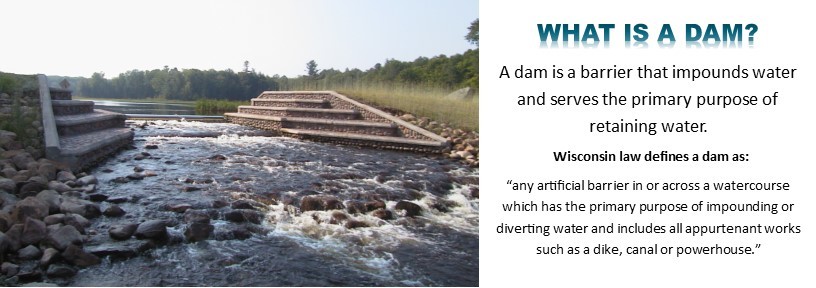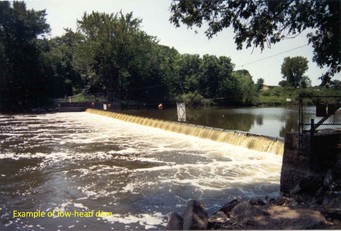|
May 2019

Today’s National Dam Safety Awareness Day encourages individual and community responsibility to keep America’s dams safe, operational and resilient. For state government’s part, the Wisconsin DNR Dam Safety Team inspects dams, helps to identify risks at dams and helps ensure repairs are made. The DNR also provides grants to support owners’ efforts to make their dams safer.
With at least 3,900 dams in Wisconsin, dams provide many benefits, such as recreational opportunities, hydropower, agricultural uses, wildlife habitat and occasionally, flood control. However, we are not immune to the risks associated with dams, especially downstream flooding if a failure occurs.
Organizers instituted National Dam Safety Awareness Day to commemorate the tragic failure of the South Fork Dam near Johnstown, Pennsylvania, on May 31, 1889. That event claimed more than 2,200 lives and was the worst dam failure in United States history.
Learn more about your local risk, your role in dam safety, and the benefits of dams:


The summer recreation season has arrived! Please remember public safety around dams before heading out to Wisconsin’s lakes and waterways this summer!
Swimming, boating and fishing account for most incidents at dams in the United States. Unfortunately, these incidents include drowning and other dam-related fatalities.
Both substantial concrete dams and low-head dams are dangerous to people recreating near them. Low-head dams, or run-of-river dams, are particularly dangerous because the water around them appears innocuous. Sometimes the dam is even difficult to spot from upstream. Low-head dams have a low profile ranging from one to 15 feet in height, and water flows over the top of the dam. But immediately downstream of the dam, underneath the water surface are circulating currents that trap people and objects up against the face of the dam. These forces are extreme and practically inescapable for swimmers and even boats.
Stay safe and use these tips when recreating in lakes and waterways:
- Maintain a safe distance from dams, both upstream and downstream, to avoid sudden currents. Walk or portage around the dam, over land, to a safe distance downstream.
- Study a map beforehand or ask a local to identify potential dams and other hazards.
- Obey posted signage and barriers near the dam.
- Wear a personal floatation device such as a life jacket.
- Tell someone when and where you are going and when you expect to return so they know you are safe.
- Do not enter the water yourself to try and help someone in trouble. Instead, dial 911 for further instruction.
To learn more, visit these resources:
Association of State Dam Safety Officials (ASDSO) public safety website:
www.damsafety.org/public-safety
“Over, Under, Gone” – 20-minute video:
www.wfyi.org/programs/over-under-gone/television/over-under-gone-the-killer-in-our-rivers
“Be a Dam Champion” – 14-minute video:
www.youtube.com/watch?v=q1XJsFYE_xU&t=4s
|
|